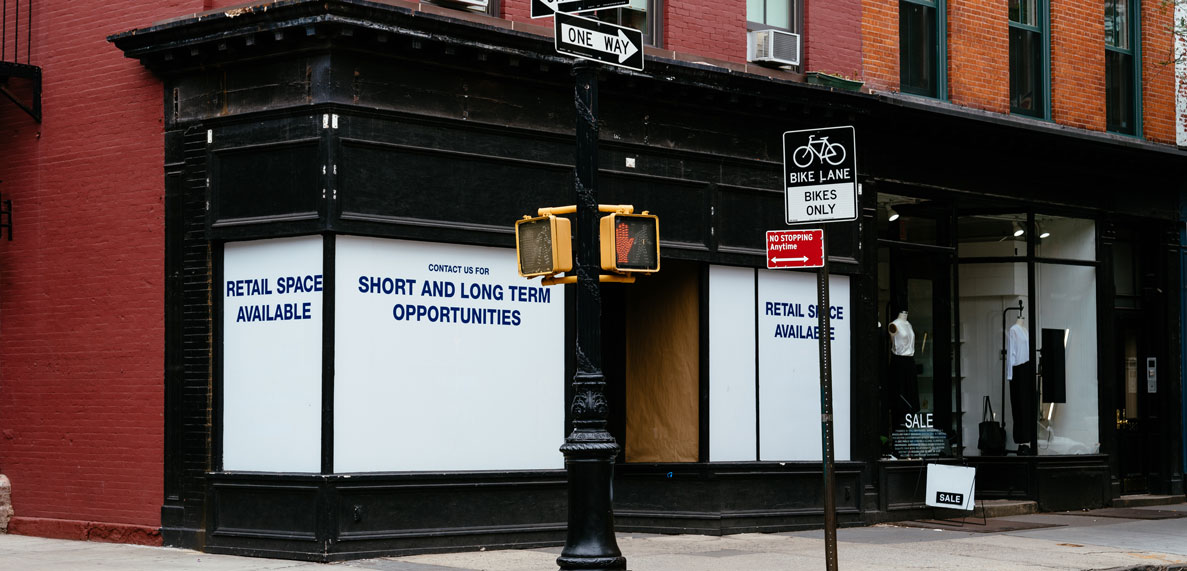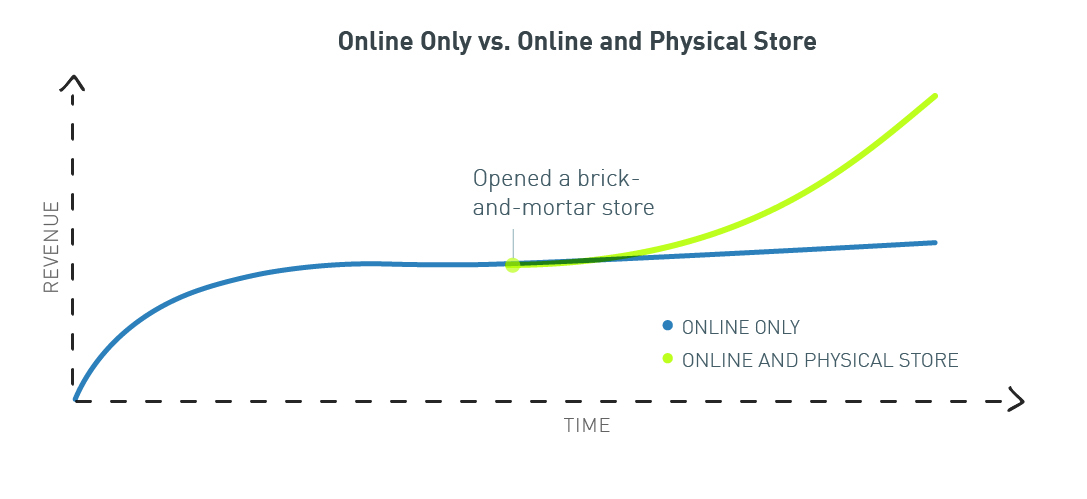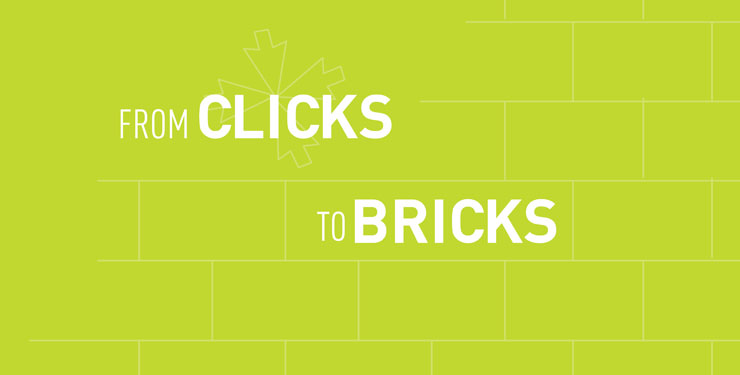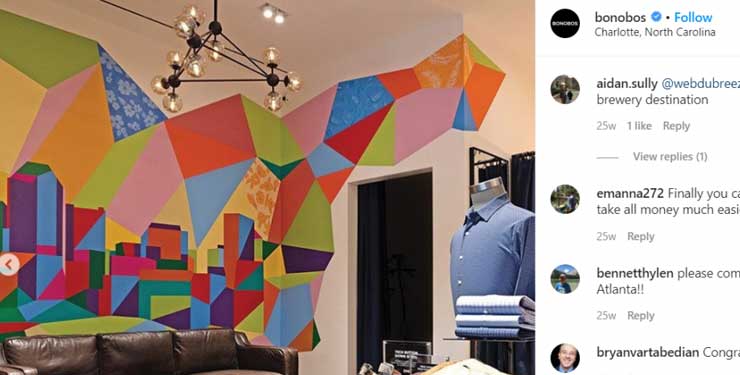
From Clicks to Bricks: Expanding Brand Loyalty Through Physical Stores

The “Clicks to Bricks” (C2B) movement is disrupting retail, and it’s here to stay. Several years ago, a handful of direct-to-consumer (DTC) brands expanded into the physical retail space. Now, dozens of others have followed suit, making the leap from entirely digital to opening brick-and-mortar locations.
Even with the current uncertainty related to COVID-19, the C2B model has some advantages over traditional retail, especially in providing a seamless integration between online and retail shopping. Now may be the perfect time for more DTC brands to explore physical retail — in a post-COVID-19 landscape with prime real estate more affordable than ever, and shoppers seeking social interaction as they become comfortable visiting retail stores again.
An Emerging Retail Trend
Today’s consumers are digital experts and gravitate toward online platforms where they can shop 24/7. They expect convenience and the ability to fulfill their shopping needs immediately. Trusting the brands they support is essential.
For retailers to compete, this means carefully listening to shoppers, understanding their habits, uncovering their unmet needs and finding new ways to attract them. It’s not business as usual anymore. DTC brands are vying for shoppers to become engaged consumers and ultimately brand advocates.
The question everyone is asking is: Why should DTC brands add the traditional retail model to their online portfolios if they are experts at shaping the online buying experience to match their shoppers’ desires? The answer is: The online-only sales model has its limitations. To get beyond base camp and reach the sales and brand penetration peak, physical retail stores represent an additional channel with increased sales potential.
According to the U.S. Department of Commerce, online sales steadily increase each year, yet they accounted for only 16% of total retail sales, or $602 billion sales out of $3.763 trillion total sales in 2019. The addition of brick-and-mortar builds brand awareness and loyalty, grows the customer base, and ultimately increases sales — both offline and online.

Advantages of Becoming a "Clicks to Bricks" Retailer
BHDP, an international, award-winning retail design firm, initiated research to learn more about shoppers’ online and retail store behaviors. An independent online market research firm gathered input from 1,000 adult U.S. shoppers between February and March 2020. These shoppers had experience purchasing both online and in a physical store from a list of established C2B retail brands. This research revealed several compelling reasons why DTC brands should seriously consider adding retail stores, including:
- Increase overall sales. 57% of those surveyed shopped at the brand’s retail store after purchasing from its online site, while 68% shopped online after purchasing from the retail store. Early C2B adopters discovered the revenue advantages of opening retail stores after successfully building a loyal following online. Warby Parker started its business online in 2010 and opened its first retail store in 2013. Now its brick-and-mortar stores provide half of its revenue.
- Build brand loyalty through enhanced customer service and unique in-store experiences. Shoppers appreciate good customer service, and become loyal to brands with great customer service. Half of the shoppers in the survey stated that access to in-store personalized customer service increases their likelihood to visit a retail store. As well, 58% said it’s important to be able to order online from a sales representative while shopping in-store if the desired product is not available at the retail location.
- Foster convenience. Of the shoppers who would rather shop in-store instead of online, 59% wanted the ability to compare and confirm specifics such as fit, color and texture, and 41% liked the instant gratification of being able to leave with the purchased item in hand.
- Boost customer touch points. The convenience of in-store returns or in-store pickup of online orders provides extra opportunities for making a positive impression, brand engagement and additional in-store purchases.
The research also collected information about how shoppers felt about their experiences. Over two-thirds (69%) of shoppers who shopped at the brands’ retail stores after making an online purchase believed that the in-store brand matched the online brand. This was primarily due to product availability (63%) and the décor or aesthetics of the retail space (33%). The majority of these shoppers (89%) were extremely or somewhat satisfied with their in-store experience compared to their online experience.
Challenges in Transitioning to a "Clicks to Bricks" Retailer
There are growing pains in translating DTC brands from a digital form to a physical environment. Because this movement brings an abundance of new brands to an already highly competitive and saturated marketplace, C2B retailers must get this formula right by understanding in-store consumers and creating a fresh way of shopping to meet their needs. Successful adaptation of a digital brand shopping experience to an in-store experience needs to incorporate knowledge of shoppers’ behaviors and preferences. Not paying attention to this trend can mean the difference between success and failure.
In the survey, many shoppers reported the in-store experience did not match the online experience due to product availability differences. Shoppers expect there to be as much, or nearly as much, product available in-store as there is online.
This lack of product availability has significant ramifications on the design of C2B retail stores. The first impression is critical in retail. Because most C2B retail stores have a smaller footprint than traditional stores and are unable to display the brand’s entire product line, it is important for store designers to impress shoppers quickly with an enhanced in-store experience. A worst-case scenario for retailers occurs when shoppers leave their stores disappointed or frustrated because they may not return. An enhanced in-store experience reassures shoppers that visiting retail locations is worth the effort and strengthens brand loyalty.
Consistency also is imperative. There shouldn’t be a disconnect between the online brand shoppers fall in love with and the C2B retail space. Instead, retailers need to create a seamless translation from online to in-store shopping, by designing the physical space to reflect the look and feel of the brand’s online shopping experience.
Also, online-only retailers may lack the resources and in-house capabilities to create an unparalleled retail shopping experience. Some are afraid of jumping into the physical retail space because they don’t understand it or know how to manage it, or don’t have the creative bandwidth in store planning, design, experiential graphics and implementation. They tend to rely on their online knowledge to create retail environments, which may not translate into a rewarding experience for shoppers and a profitable venture for DTC brands.
Take the Plunge into Physical Retail Stores
Is this the right time for online retailers to take the risks of expanding into retail stores? If they are serious about stimulating growth, the answer is yes. Shoppers still crave the in-store experience. This will become a more significant factor as COVID-19 restrictions are lifted and commercial real estate is readily available and affordable. When C2B retailers translate the online retail brand experience to align with their shoppers’ expectations, they can deliver more creative, innovative and engaging brick-and-mortar environments that build loyalty and generate increased revenue.
This article was originally published on Retail Touchpoints.



